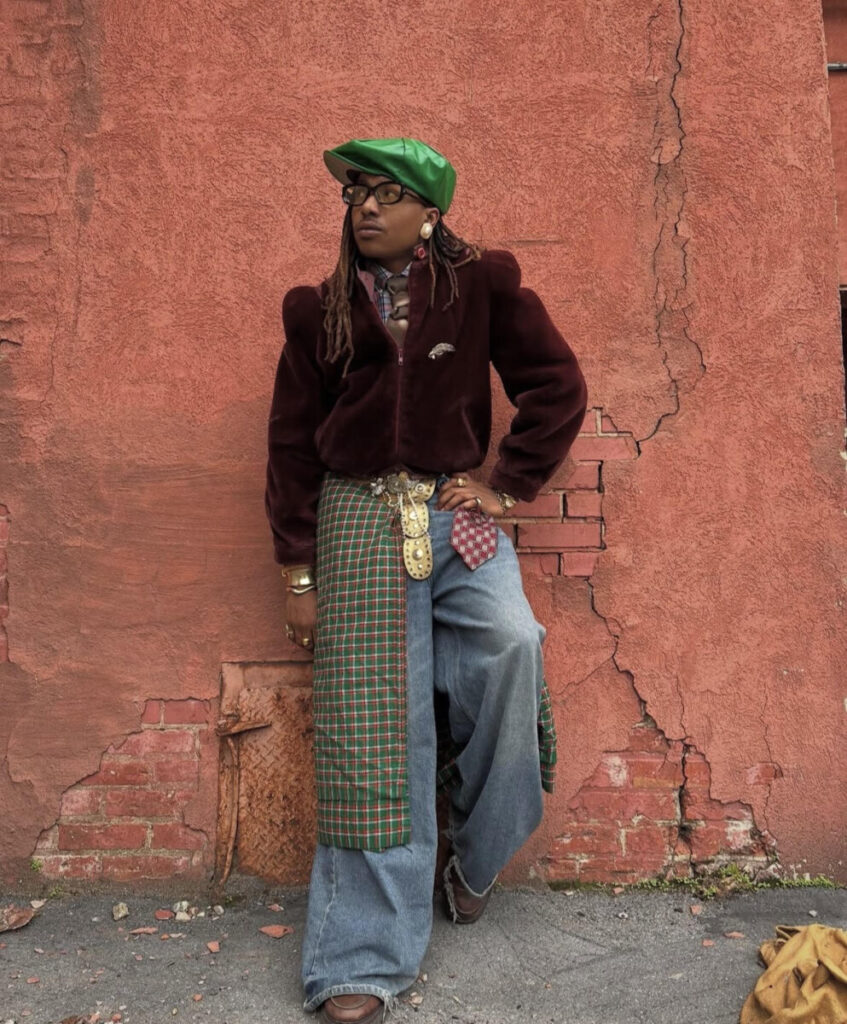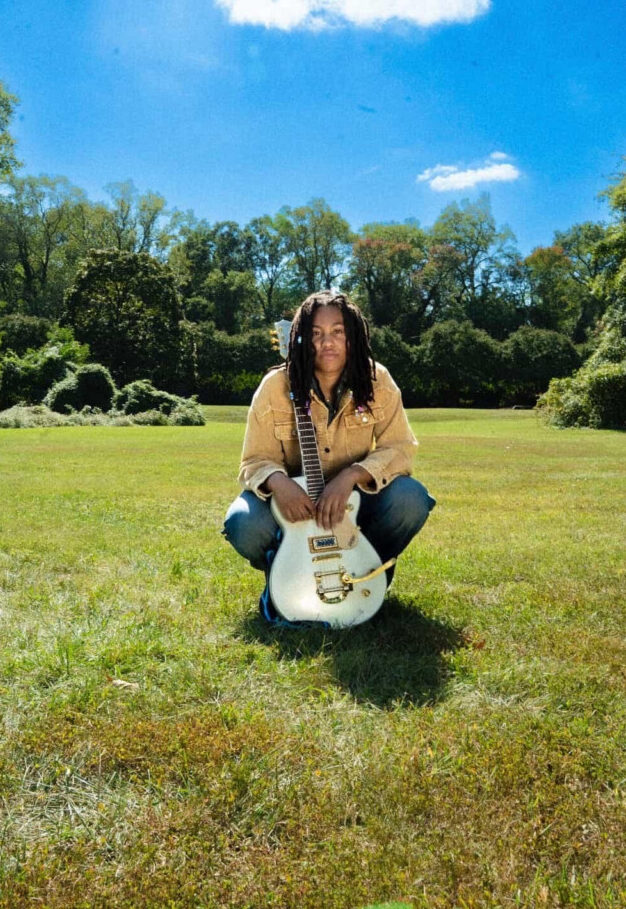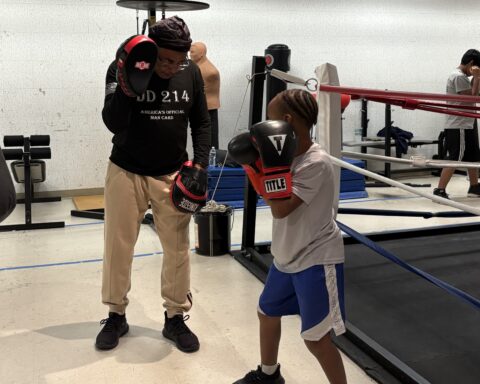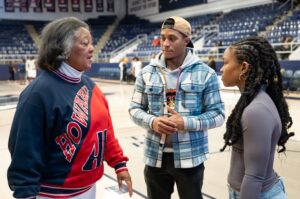Inside Howard University’s Chadwick Boseman College of Fine Arts, an entire wall is lined with portraits of Black musicians and creatives: legends suspended in time, their expressions bold and unmistakable.
The grain of the photographs, the faded tones and the steady, confident gazes reflect an era when music and style were more than trends. They were a lifeline, a source of identity, expression and belonging.
Across TikTok feeds, thrift shops and campus sidewalks, old-school sounds collide with fresh silhouettes.
Baggy jeans, velour tracksuits, plaid skirts and layered headphones drift back into view, carrying the familiar nostalgia of styles once lived in, now reimagined for a new generation.
The past is everywhere, but for Gen Z, nostalgia isn’t a costume.
It’s a language, a way to feel grounded in a world that’s constantly shifting and updating.
“I listen to older music all the time because it feels more authentic,” said Trinity Taylor, an audio production major whose style feels just as curated as her playlists. “Gen Z values authenticity a lot. I think we’re all being more real.”
Taylor also frequently plays in a band and is skilled in guitar along with several other instruments. Music isn’t just part of her life; it’s the pulse that runs through everything she does.
Her wardrobe mirrors that same rhythm. Filled with Doc Martens, crisp trousers and button-ups, it looks like it stepped out of a mid-century album cover, yet somehow feels entirely modern.
“My whole life is music,” Taylor said. “When I like something, I want to be able to express it without having to tell anyone.”
She credits artists like Tyler, the Creator, whose blend of quirky nostalgia and alt hip-hop perfectly captures the fusion of eras that attracts Gen Z. Tyler’s preppy, old school-inspired style tells stories as vividly as his music, a quality that deeply influences Taylor’s look.
“Music and fashion go hand in hand,” she said.
“When people wear something like [their favorite artists’] pins on their shirt, it’s my favorite thing,” she explained. “It’s being able to connect to someone without speaking.”
Although Gen Zers tend to incorporate the past into their personal style or music choices, they make them innovative by giving them a sense of uniqueness, she said.
“Art in general is about how to [take from others] but creatively,” Taylor said. “Even though fashion and music trends come back, they come back with a certain flair to it that’s not completely identical.”
“If you’re able to take something from back in the day and adapt it to make it relate to the time now, that’s when I think it’s timeless.”
The Beat Behind the Look
Every decade has dressed its sound, and music’s influence on fashion has always been loud.
The 1970s wasn’t just an era; it was a glow. Sequined jumpsuits, satin bell-bottoms and stacked platforms shimmered under club lights, catching the beat as much as the eye.
Donna Summer shaped the sound of disco, while groups such as Earth, Wind & Fire and even the Jackson 5 helped define the decade’s bold aesthetic. Their vibrant colors, coordinated stagewear,and larger-than-life performances amplified the same sense of glamour that pulsed through disco culture.
The mix of glitter, dramatic makeup and Afro-futuristic silhouettes challenged traditional gender norms and pushed fashion toward a more expressive, boundary-breaking era.
By the 1980s, hip-hop pulsed through cities, turning everyday clothing into cultural armor.
The message of hip-hop, its clothing, and the surrounding culture was deeply rooted in self-expression, empowerment and resistance against societal norms. It quickly became a voice for marginalized communities, offering both an outlet for creativity and a platform for social and political commentary.
Salt-N-Pepa’s chunky jewelry, LL Cool J’s Kangol hats and RUN DMC’s Adidas tracksuits each carried meaning, confidence and defiance.
“Music and clothing work for each other. They feed each other,” said Kehembe V. Eichelberger, music historian and voice professor at Howard University.
Eichelberger lived through the intersection of art and activism during the Civil Rights era. To her, fashion wasn’t superficial; it was resistance.
Students wore afros, dashikis and natural textures not because they were trendy, but because they declared Black pride and self-worth in a society that tried to smother both.
“It was a time where all college students had a sense of unrest,” Eichelberger said. “It was a way for us to speak and make our voices heard about the times that were going on.”
“It was a representation of culture.”
Eichelberger referenced many creatives whose art imitated Black life, including Langston Hughes, an iconic African American songwriter and poet.
“These artists were speaking about the revolution. It was people identifying with themselves,” she said.
Reclaiming the Past, Remixing the Present
Today, Eichelberger sees another generation returning to the past for meaning, but in a different way.
The ‘70s, ‘80s, ‘90s and early 2000s live on in TikTok edits, vinyl-sampled beats and thrifted wardrobes.
“Something happens in society that makes us reflect, that causes us to think about ourselves,” she said. “It makes people come back to their roots.”
Fashion trends may cycle, but the impulse behind them doesn’t. Music carries memory. Clothing carries meaning.
For Gen Z, both are tools for telling the world who they are or who they’re becoming.
Inside the College of Fine Arts, the portrait wall still stands. The faces of the past: those who shaped rhythm, rebellion and style look out with the same fearless energy that pulses through campus today.

(Photo: @kamiconik_/Instagram)
As students create, perform and express themselves across art forms, it feels like those portraits are watching a new generation step into the spotlight, remixing the rhythm, rewriting the look and reclaiming their voice one beat and one outfit at a time.
Bri Outlaw, who specializes in fashion and culture, is a reporter for HUNewsService.com.












